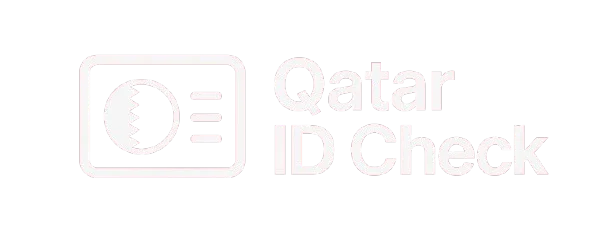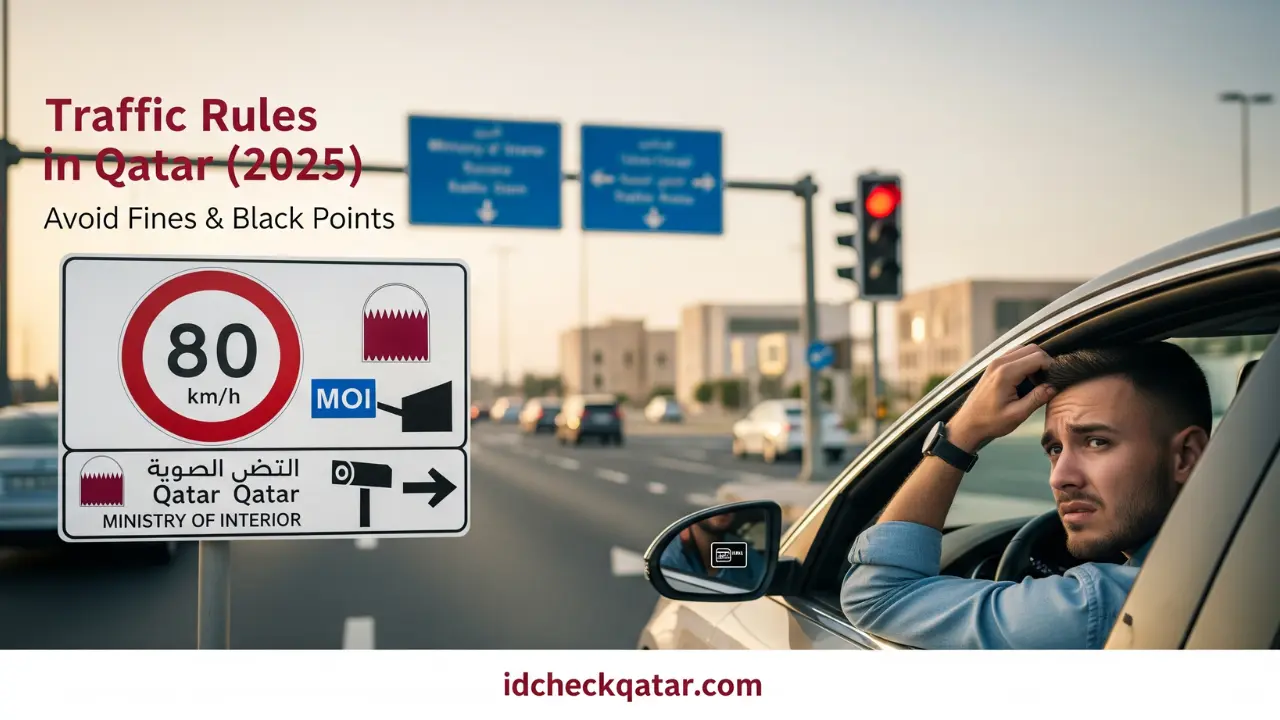Traffic Rules in Qatar (2025) – Avoid Fines & Black Points
Driving in Qatar comes with strict traffic rules designed to ensure safety for both locals and expats. Understanding and following these rules is essential, especially since fines, black points, and even travel bans can result from violations. Whether you’re a resident or a newcomer, knowing the current traffic laws in Qatar, including the new traffic rules and signal violations, helps you avoid trouble on the road.
MOI enforces strict traffic rules in Qatar, including new driving regulations, speed limits, signal obedience, and violation penalties. Knowing these laws helps avoid fines, black points, and license suspensions.
If you’re also checking your Qatar ID status, make sure to review the MOI Qatar ID check process as part of staying compliant with all national documentation. You can also explore the detailed guide to Qatar traffic violations and penalties to learn more about how the rules apply to real-world scenarios.
Key Traffic Rules in Qatar for 2025
Driving in Qatar in 2025 requires strict adherence to updated regulations. The driving rules in Qatar include rules for licensing, road use, safety, and documentation. All motorists must:
- Drive on the right-hand side of the road.
- Be 18 years or older to drive a light vehicle.
- Always carry a valid Qatar driving license, vehicle registration (istimara), and insurance documents.
- Use seat belts for all passengers.
- Avoid mobile phone use while driving unless hands-free.
The country also has clear rules on roundabouts, lane discipline, and pedestrian crossings, with heavy penalties for violations.
Updated Traffic Laws and Penalties in 2025
The new traffic rules in Qatar were reinforced in early 2025 to improve road safety. These updated laws include:
- Speed limit enforcement:
- Urban roads: 60–80 km/h
- Highways: Up to 120 km/h
- School zones and residential: 30–40 km/h
- Signal violations:
- Running a red light: QR 6,000 + 7 black points
- Blocking intersections: QR 1,000 + 2 points
- Illegal U-turns or signal jumps: QR 2,000–4,000
- Driving under influence (DUI):
- Up to QR 50,000 fine
- Jail or deportation possible
- License suspension + 7 points
To avoid such fines, it’s essential to keep track of your violations. You can check online using tools like the vehicle-based traffic fine checker for quick updates.
Traffic Signal Rules in Qatar
Signal-related violations are among the most heavily penalized. The traffic signal rules in Qatar are strict:
- Obey traffic lights and directional arrows without exception.
- Pedestrians always have priority at crosswalks with signals.
- Never enter an intersection during a red light, even if the path ahead is clear.
- Yield to vehicles inside a roundabout or following directional signs.
Violation of these rules can be tracked using speed and red-light cameras across major roads and intersections.
Demerit Points and Violation System
Qatar applies a black point system where drivers accumulate points for every violation:
| Violation Type | Points | Fine Range (QR) |
|---|---|---|
| Speeding > 40km/h | 2–4 points | 500–1,000 |
| Using mobile while driving | 3 points | 1,000–3,000 |
| No seatbelt | 1 point | 500–1,000 |
| Dangerous overtaking | 4 points | 2,000–5,000 |
| Red signal violation | 7 points | 6,000 |
Once a driver accumulates 14 points, their license is suspended for three months. Repeat offenses can lead to cancellation or legal action. You can find helpful steps to remove black points in Qatar if you’ve already accumulated any.
Common Traffic Violation Rules in Qatar
Here are some frequent violations that drivers should avoid:
- Driving a vehicle with expired registration (istimara).
- Illegal vehicle modifications like tinted windows or loud exhausts.
- Parking on sidewalks or in disabled zones.
- Not using headlights at night or during low visibility.
- Honking unnecessarily or using loud horns.
Each of these can result in QR 300–3,000 fines depending on severity. For late fine consequences, you may refer to this guide on handling late traffic fines in Qatar.
New Traffic Rules in Qatar for 2025
Qatar has recently introduced regulatory updates aimed at improving road safety and minimizing accidents:
- Truck ban timing enforcement: Specific time slots restrict heavy vehicle access to urban roads. Refer to the complete truck ban schedule here.
- Helmet rules for electric scooters: New safety rules for micro-mobility users.
- Real-time traffic monitoring: Advanced surveillance to catch live violations and send immediate Metrash notifications.
- License suspension alert system: Users are now notified via Metrash if license points approach limits.
These new laws aim to reduce serious accidents and promote safer urban transportation.
Driving Rules in Qatar: What Every Driver Must Know
Here’s a recap of must-follow traffic rules in Qatar every driver should remember:
- Always use seat belts.
- Respect lane markings and signal before changing lanes.
- Never drive under the influence of alcohol or drugs.
- Use headlights at night or during poor visibility.
- Yield to emergency vehicles and school buses.
- Obey pedestrian crossings, especially in urban zones.
Even a simple rule break can lead to fines or travel complications. Before leaving the country, always ensure your QID is valid and not blocked. Learn more about ID blocks and checks here.
FAQs – Traffic Rules in Qatar
Final Thoughts
Qatar’s traffic system is designed to promote safety and discipline on the roads. Whether you’re a resident or a visitor, following the traffic rules in Qatar is not just about avoiding fines, it’s about protecting yourself and others. With the government’s tech-enabled enforcement and real-time penalties, staying updated and compliant is the only way forward.
For full support on traffic, ID, and other official services, visit the MOI Qatar portal guide for everything in one place.

